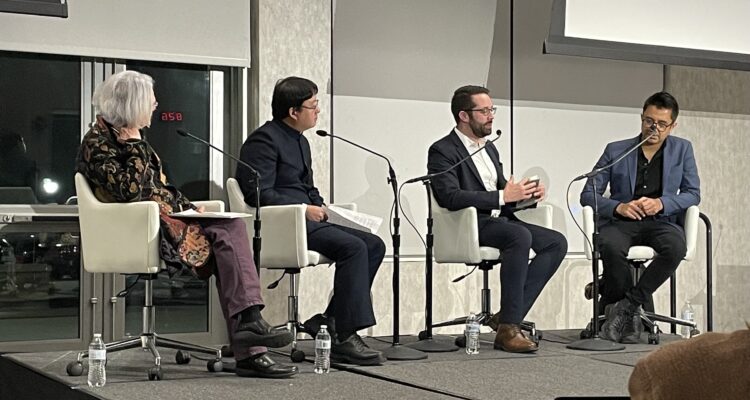On Wednesday, Feb. 1, the Regina A. Quick Center for the Arts welcomed composer-pianist, Vijay Iyer, in affiliation with the Fredrickson Family Innovation Lab to present “Musicalities: Scenes of Sonic Mattering”. Held in the Dolan School of Business Event Hall, Iyer’s lecture prompted audience members to reflect upon what musicality really means.
Iyer has released two dozen critically acclaimed albums, and has received honors such as the MacArthur Fellowship, a Doris Duke Performing Artist Award, a United States Artist Fellowship, a Grammy nomination and the Alpert Award in the Arts. As professor of Music and African and African American Studies at Harvard, Iyer’s research focuses primarily on the intersections between music studies, Black studies and the sciences.
“I am a music maker who has made it my practice to explore the limits of what I think music is,” he said.
Referring to himself as a “reluctant” music scholar, he explained some of his early academic work and his development of the conception of “embodied music cognition.” To Iyer, music is the sound of bodies in motion. Black music makers, Black musical systems and Black methods are constantly confronted by the Eurocentric frameworks of music theory, musicality, etc. In examining the heavy western influence on the idea of musicality, Iyer emphasized that music is “first and foremost embodied human action.” Music is the sound of bodies in motions. It is the sound of everything we do.
“Both music and the human are political and ideological formations,” Iyer explained.
He claimed that both music and the human body can be constructed and policed. As our conception of what music is is heavily based on western standards and ideologies, there are various groups that are “hurled outside the musical world.”
So, what is musicality? Iyer prompted audience members to ask themselves. A lot of times, this term is used as a catchall. It implies that there is one correct way to make music; that there is one correct way music should sound. Musicality is considered something special, but everyone has it. But can musicality emerge from the most unlikely circumstances from objects that may not even be considered musical? Can musicality emerge from the everyday happenings of life?
Iyer presented the audience with some examples from his own life. He and his sister banging noisily on a piano, his violin instructor pushing the leaf of a plant with his bow, his father honking the horn to the beat of the car stereo. Iyer explained these to be some of his fondest “musical” memories, though these instances may not seem like our typical understanding of “musicality”.
In a tweet, Iyer asked his followers “What’s not musical but feels like music to you?” and shared his findings with the audience in his lecture. Some of the responses included cooking, poetry, laughter, white noise, wind, construction, sunlight, everything and more. They are thoughts, conceptions, objects, noises. Again, none of these are inherently musical, yet they feel like music to people, creating what Iyer defines as a “larger space of sonic mattering.”
The end of the lecture was reserved for questions from a faculty panel including Michael Ciavaglia, professor of music, Dr. Tommy Xie, Professor of Journalism and Dr. Martha LaMonaco, Professor of Theater as well as questions from the audience. As I grew up playing piano myself, I was fascinated by Iyer’s conception of musicality. It is true that we learn there is a certain way music should sound, there are correct notes that should be played and there are certain types of music that are “real” music. But Iyer emphasizes that musicality has no one meaning. Musicality is special, yet everyone has it; everyone has “musical memories”. There is a larger space of sonic mattering.


Leave a Reply